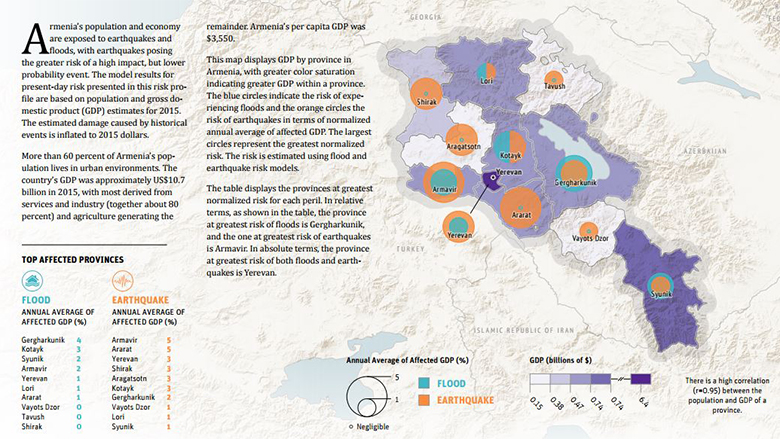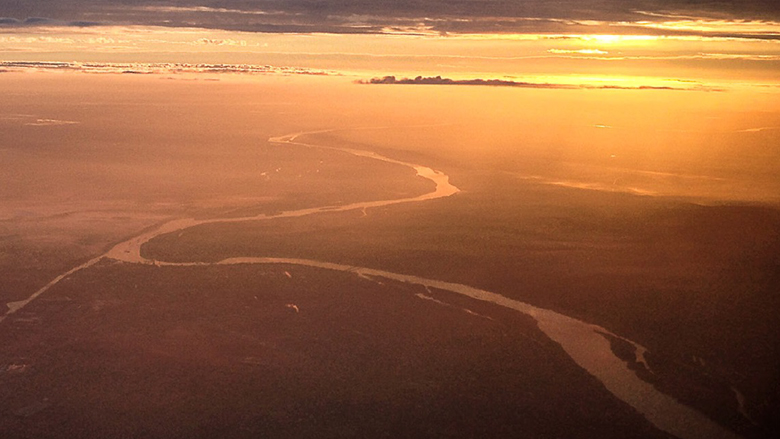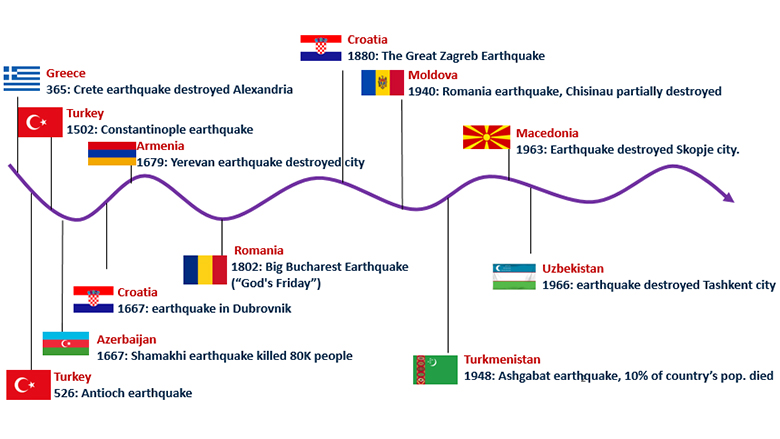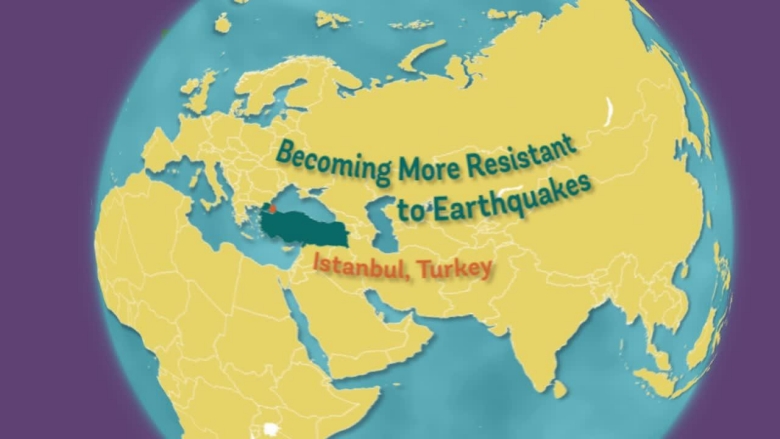Rationale and Approach
Recognizing, assessing, and understanding risks from natural hazards and climate change are the first steps toward reducing their adverse effects. With access to comprehensive disaster risk information, policymakers, the public and other stakeholders can better understand the potential impacts of natural hazards, and carry out risk-sensitive planning and investment before a disaster strikes.
Investments supporting disaster risk management also provide benefits beyond the mitigation of risk and the reduction of loss when disaster strikes. Investing in resilience also unlocks economic potential thanks to reduced risks, and generate development co-benefits such as eco-system services, transportation uses and agricultural productivity gains, even in the absence of disaster.
As part of these efforts, the World Bank, in collaboration with GFDRR, recently released the Europe and Central Asia Country Risk Profiles for Floods and Earthquakes publication. From it, national decision-makers and other stakeholders can obtain an overview of the evolution of risk in each country, how the risk varies among a country’s provinces, and how countries rank in regard to risk in the Europe and Central Asia region.
At a technical level, GFDRR, through the Innovation Lab, facilitated the development of national probabilistic risk profiles for selected countries across Europe and Central Asia as a first step of initiating a dialogue with governments to consider further policies, measures, and investments that could increase resilience. Such quantitative risk profiles are derived from existing global flood and earthquake models, and take into account the dynamic nature of risk by including changes in climatic scenarios and patterns of socio-economic development (urbanization, demographic growth, etc.).
A Country Snapshot: Armenia
For each country profile, the resulting risk assessments reveal a country’s susceptibility to risk in terms of affected population, affected Gross Domestic Product (GDP), and – for the earthquake risk models – quantified in terms of fatalities and capital losses. The risk profiles also look at scenarios where a given event is less frequent but more extreme in magnitude – also known as "return periods" in this context.
Return Periods:
A 100-year flood for example does not mean that a 100-year flood will occur every 100 years. Instead, it means that there is a 1 percent chance in any given year that a flood of a large magnitude will occur. A 250-year earthquake therefore has a 0.4 percent chance of occurrence.
|
In Armenia for example, a 100-year flood is estimated to impact about 6 percent of GDP ($700 million) while a much larger percentage (84 percent or $9 billion) could be affected by a 250-year earthquake. For Armenia’s population and economy, earthquakes therefore present a much higher impact risk, but are much less likely to occur.

While this is a preliminary assessment, it can serve to identify on first glance the provinces with higher estimated percentages of GDP at risk annually for both floods and earthquakes.
Focusing on Future Risks
As the world evolves, particularly with urbanization and climate change, disaster risk estimates change. The Europe and Central Asia Country Risk Profiles account for these "drivers of risk" by taking into account different climate change projections and socioeconomic growth scenarios. Yet, due to the inherent uncertainty that the future holds, there is a certain range of estimates a risk assessment provides. So what does this mean in practice?
Going back to Armenia: if the country had experienced a 250-year earthquake in 2015, for example, the affected GDP would be about $9 billion in damage and losses. Yet, the assessment indicates that in 2080, the same earthquake is likely to cause damages between approximately $30 and $50 billion. The relatively large spread of $20 billion in damages is derived from uncertainty in changes in urbanization, population growth and an increase in exposed assets. As with all future impact estimates, uncertainty is an inherent part of a risk assessment and should be taken into account by decision-makers.
Moving Forward
The Europe and Central Asia Country Risk Profiles for Floods and Earthquakes will serve as an initial stepping stone in helping decision-makers become aware of the potential impacts of a disaster, particularly in a region that often lacks updated, accessible or digitized risk information. This type of actionable information is essential for policies, investments and other forward-looking measures that can build resilience in the long term.
Download the full report
Country Risk Profiles (PDF)




